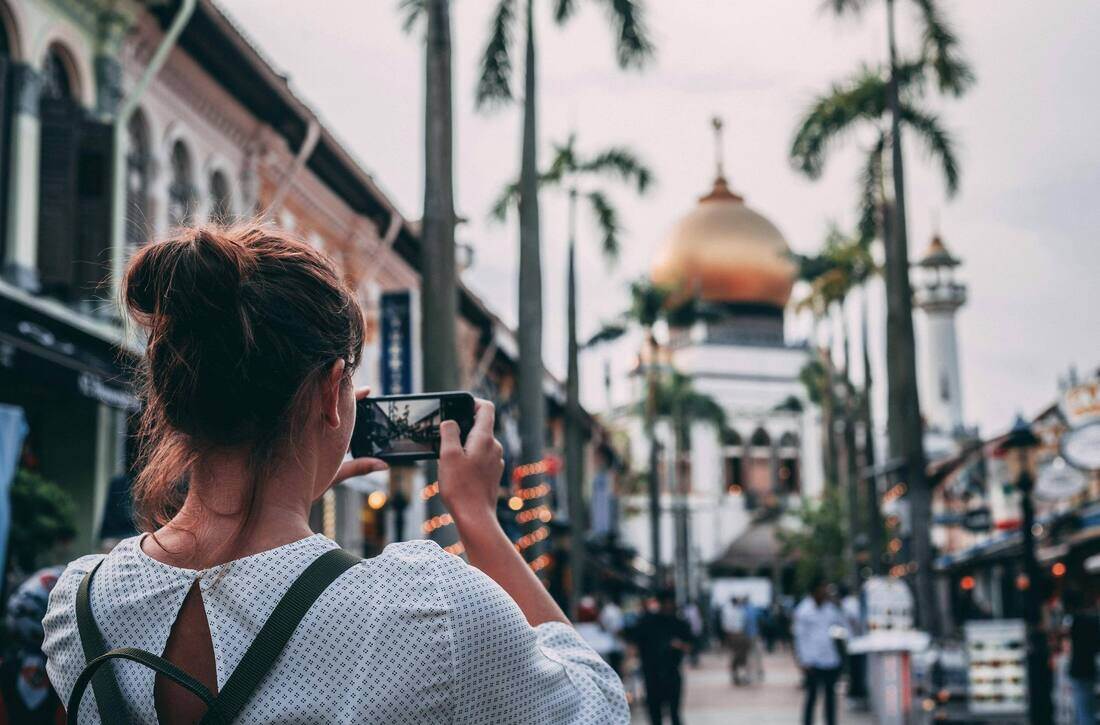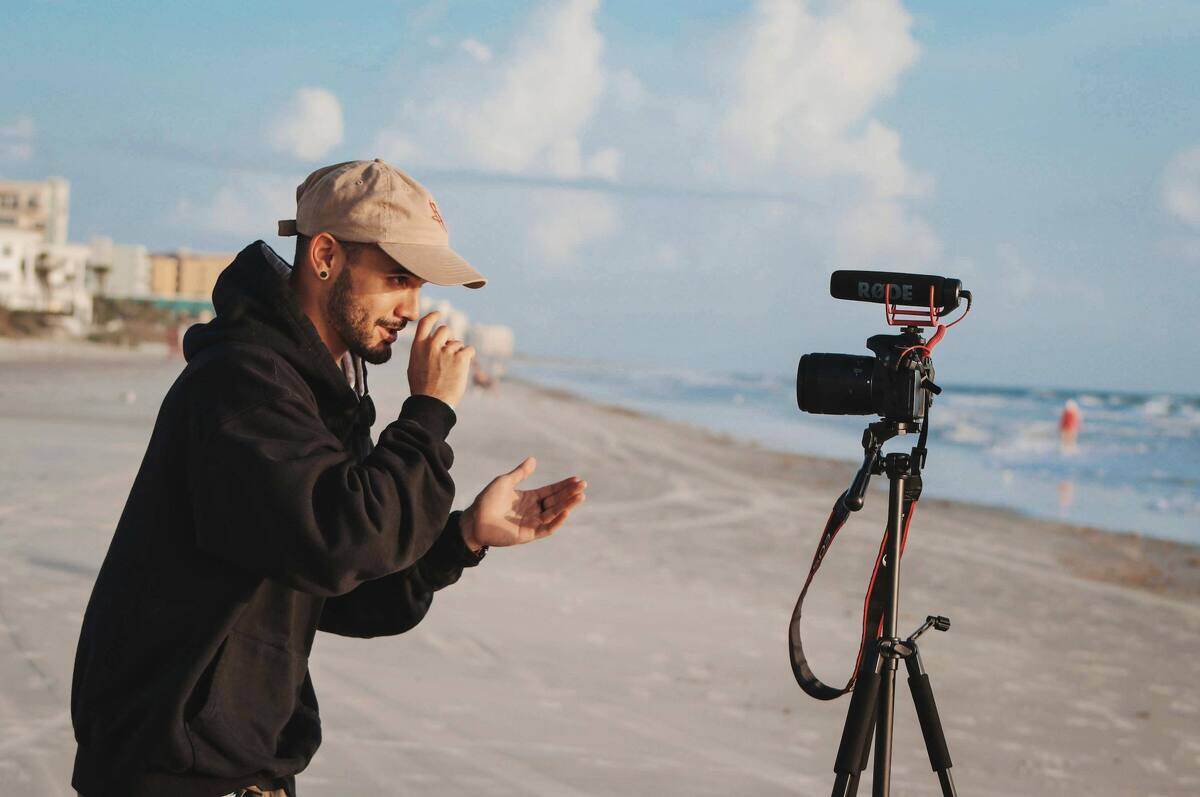Hospitality Influencer Marketing: Utilizing Micro & Nano Influencers
The hospitality industry is evolving rapidly, with digital trends reshaping how brands connect with travelers. As highlighted in2025 Travel Trends:...
5 min read
The Travel Foundry Nov 14, 2024 7:00:00 AM

In the highly competitive world of travel and hospitality marketing, creating a seamless and compelling narrative is no longer a nice-to-have—it’s a necessity. With travelers interacting with brands across increasing touchpoints—websites, social media, email marketing, apps, and even in-person experiences- ensuring consistent storytelling is key to building trust and loyalty. In 2025, these fragmented interactions can either build your brand or tear it down.
A strong, unified brand story connects with customers on an emotional level, drives engagement, and ensures a smooth journey from discovery to booking to post-trip loyalty. However, delivering a cohesive message across all channels is challenging. Travel marketers must find ways to maintain brand consistency, tailor messages for different segments, and align their digital and physical experiences all while staying true to their core values.
This article will explore why seamless storytelling is crucial for the travel and hospitality industry in 2025, offering actionable insights and strategies to maintain brand continuity. We’ll dive into trends such as the increasing importance of personalization, the integration of digital and offline touchpoints, and how user-generated content (UGC) is reshaping the marketing landscape.
When customers engage with a brand across different platforms, they expect consistency. Research shows that 89% of consumers stay loyal to brands that present consistent messaging across all channels (Forbes, 2024). For travel and hospitality marketers, this is particularly important: every interaction, from social media posts to email newsletters to on-site experiences, should reinforce the same brand identity.
89% of consumers stay loyal to brands that present consistent messaging across all channels.

Imagine a traveler booking a stay at a luxury resort. The brand promises an exclusive, tailored experience through its website, but upon arrival, the messaging and aesthetics fall short—maybe the staff are indifferent, or the decor feels generic. This inconsistency can cause confusion and frustration, leading to a breakdown in trust.
To ensure consistency, marketers should start by developing a clear set of brand guidelines that cover tone, messaging, and visual identity. This ensures that every department, from marketing to customer service, speaks in one voice. For example, the luxurious narrative of a brand like The Ritz-Carlton must be reflected not just in their website and social media, but in every touchpoint, including the booking experience, in-room amenities, and customer service interactions.
To implement this, take an inventory of all the places where your customers interact with your brand. Check for consistency in messaging and visuals—especially on high-traffic platforms like your website, social media, and email marketing campaigns. Tools like a Brand Style Guide or software like Brandfolder can help ensure that everyone is aligned on how your brand story should be told.
Real-World Example: The Ritz-Carlton is a prime example of a brand that nails consistency across all touchpoints. From its website, which uses elegant imagery and sophisticated language, to the luxurious service you receive in person, every interaction reinforces the brand’s promise of a high-end, bespoke experience. When guests check in, the luxury experience continues seamlessly, making them feel like part of an exclusive club.
Personalization is no longer optional in 2025—it’s an expectation. A Forbes article from April 2024 highlights that 81% of customers prefer companies that offer a personalized experience, and 70% say a personalized experience in which the employee knows who they are (Forbes, 2024).
In the travel and hospitality industry, marketers can leverage data to create tailored messages that resonate with specific traveler needs, from personalized emails to customized booking experiences.
81% of consumers prefer companies that offer a personalized experience
 For instance, imagine a guest books a spa weekend at a resort. Using data from their previous stays or browsing behavior, you can send targeted follow-up emails that highlight spa packages, dining options, or other experiences that align with their interests. This kind of personalized storytelling feels more relevant and engaging, leading to higher conversion rates and customer loyalty.
For instance, imagine a guest books a spa weekend at a resort. Using data from their previous stays or browsing behavior, you can send targeted follow-up emails that highlight spa packages, dining options, or other experiences that align with their interests. This kind of personalized storytelling feels more relevant and engaging, leading to higher conversion rates and customer loyalty.
Start by integrating your CRM and marketing automation tools to create a single customer view. This allows you to track their preferences and behaviors across channels. Personalization shouldn’t be limited to just email; it should extend to your website, social media, and even in-person experiences.
For example, if a luxury hotel chain knows that a guest has stayed multiple times for business purposes, they could tailor their marketing materials to emphasize business-friendly amenities like flexible check-in, high-speed internet, and conference facilities. On the flip side, if the same hotel targets a family, they could highlight family suites and kid-friendly activities in personalized emails.
Real-World Example: A prime example of effective data-driven personalization is Marriott’s Bonvoy program. By leveraging customer data, Marriott is able to offer personalized recommendations, special promotions, and loyalty rewards based on previous stays, traveler preferences, and booking history. This approach has led to higher levels of engagement and customer satisfaction.
 As customers increasingly move between digital and physical touchpoints, it’s crucial for travel and hospitality brands to maintain consistency in their experiences. A customer might first encounter your brand on Instagram, book through your website, and finally experience it in person at your hotel or resort. Ensuring that your brand story is consistent across these different platforms is vital for delivering a seamless experience.
As customers increasingly move between digital and physical touchpoints, it’s crucial for travel and hospitality brands to maintain consistency in their experiences. A customer might first encounter your brand on Instagram, book through your website, and finally experience it in person at your hotel or resort. Ensuring that your brand story is consistent across these different platforms is vital for delivering a seamless experience.
For example, AirAsia seamlessly integrates its digital and physical experiences. The brand's website and mobile app offer easy booking and personalized services, while its in-flight experience is aligned with the brand’s promise of convenience and customer-first service. From digital check-ins to in-flight entertainment, the brand maintains its message of accessibility and affordability, making it easy for travelers to feel connected to the brand at all stages of their journey.
An omnichannel approach is critical to ensuring brand consistency. This means aligning your online content with the in-person experience at every touchpoint. For example, if your brand markets itself as eco-friendly, this messaging should be evident on your website, in your social media posts, and at your property—whether it’s through sustainable practices or environmentally conscious amenities.
Real-World Example: Hyatt Hotels excels at this integration. Their website, mobile app, and physical locations all highlight the brand’s emphasis on luxury and customer satisfaction. The seamless transition from a personalized, easy-to-navigate digital experience to the high-touch, quality service offered at the hotel exemplifies the power of a consistent omnichannel strategy.

In today’s world, authenticity matters. Consumers trust their peers more than they trust brands. According to a 2024 report by EnTribe, 79% of people say user-generated content (UGC) significantly influences their purchasing decisions (Flocker, 2024).
For travel and hospitality marketers, this presents an excellent opportunity to amplify brand storytelling through UGC. Real customer experiences—whether through photos, videos, or reviews—can provide genuine, relatable content that enhances brand trust.
79% of consumers say that user-generated content significantly impacts their purchasing decisions
Encourage your guests to share their experiences via social media using branded hashtags, and feature their content on your website or in your marketing campaigns. This creates a sense of community and reinforces the idea that your brand is trustworthy, customer-centric, and truly delivers on its promises.
To leverage UGC, create a campaign that incentivizes travelers to share their experiences. For instance, offer discounts or a chance to win a free stay for those who post photos or reviews on Instagram using a specific hashtag. The more authentic and diverse the content, the more your brand will benefit from genuine word-of-mouth marketing.
Real-World Example: A brand like Travelodge UK encourages guests to share their photos and experiences on Instagram. By re-sharing these posts on their own channels, Travelodge not only creates social proof but also shows potential customers what a “real” stay looks like, building trust and fostering brand advocacy.

In 2025, seamless brand storytelling is essential for standing out in the crowded travel and hospitality market. By maintaining consistency across all touch points, personalizing customer experiences, integrating digital and physical channels, and harnessing the power of user-generated content, you can craft a compelling narrative that resonates with travelers at every stage of their journey.
To achieve this, you need a strategy that encompasses your entire brand ecosystem—from the digital experience to the in-person touchpoints—and you need the right tools to manage and analyze customer data. If you’re looking to refine your brand storytelling and ensure that your message resonates consistently, The Travel Foundry is here to help.
Ready to take your storytelling to the next level? Contact us today to learn how our tailored marketing strategies can help your brand maintain consistency, personalize your messaging, and create deeper connections with your audience. Let’s build a story worth telling across every touchpoint.


The hospitality industry is evolving rapidly, with digital trends reshaping how brands connect with travelers. As highlighted in2025 Travel Trends:...

As we navigate through 2025, the travel and hospitality industry is undergoing a technological renaissance. Innovations in travel and hospitality...

Your Marketing Agency Should Be a Competitive Advantage Hospitality marketing once thrived on glossy magazine spreads, bustling travel expos, and...